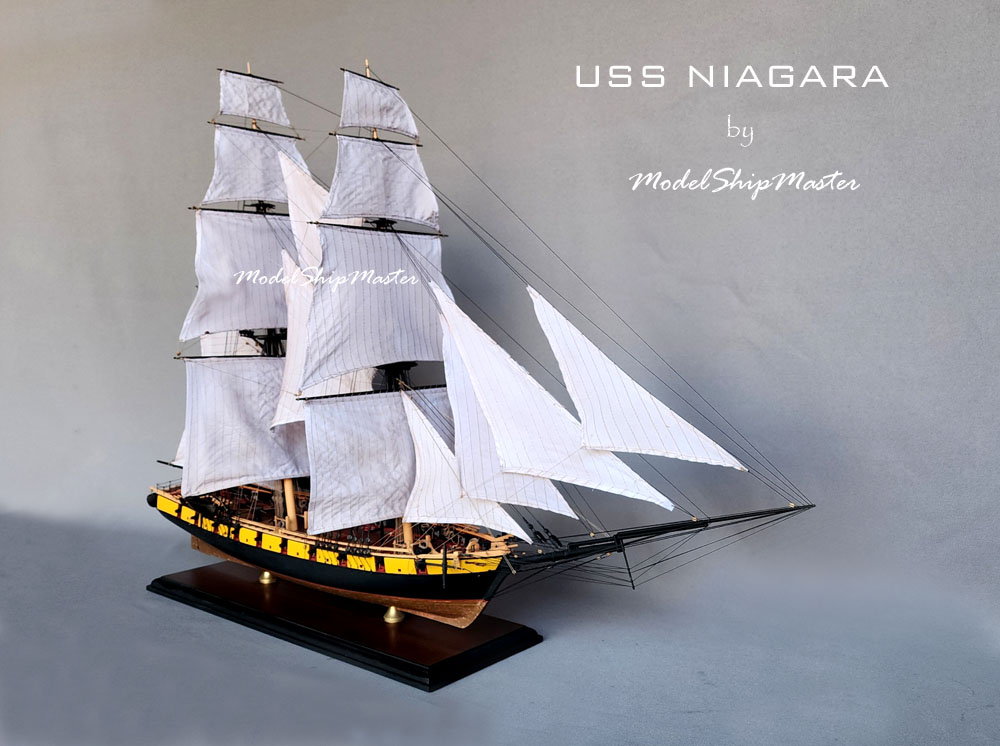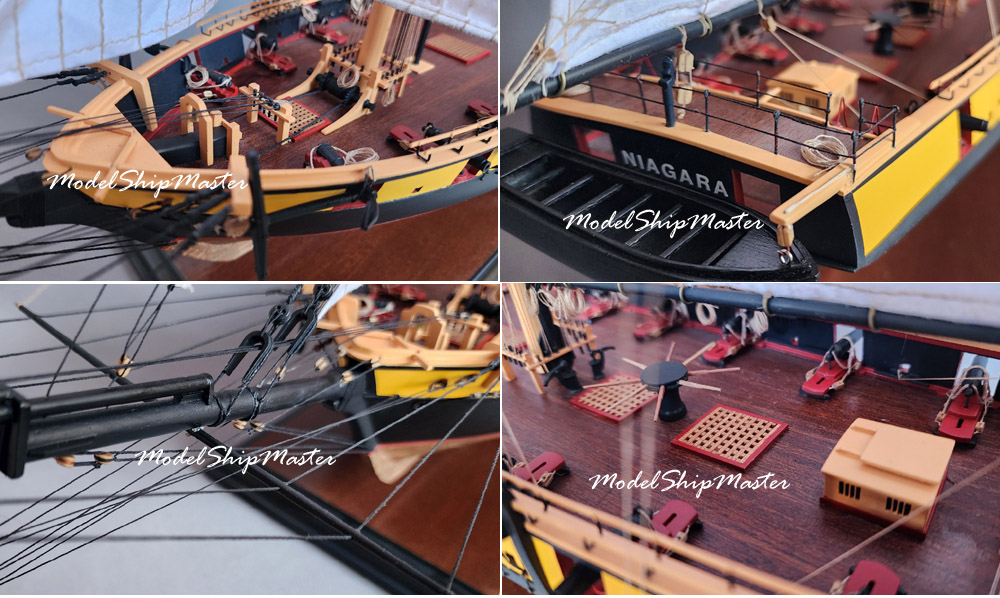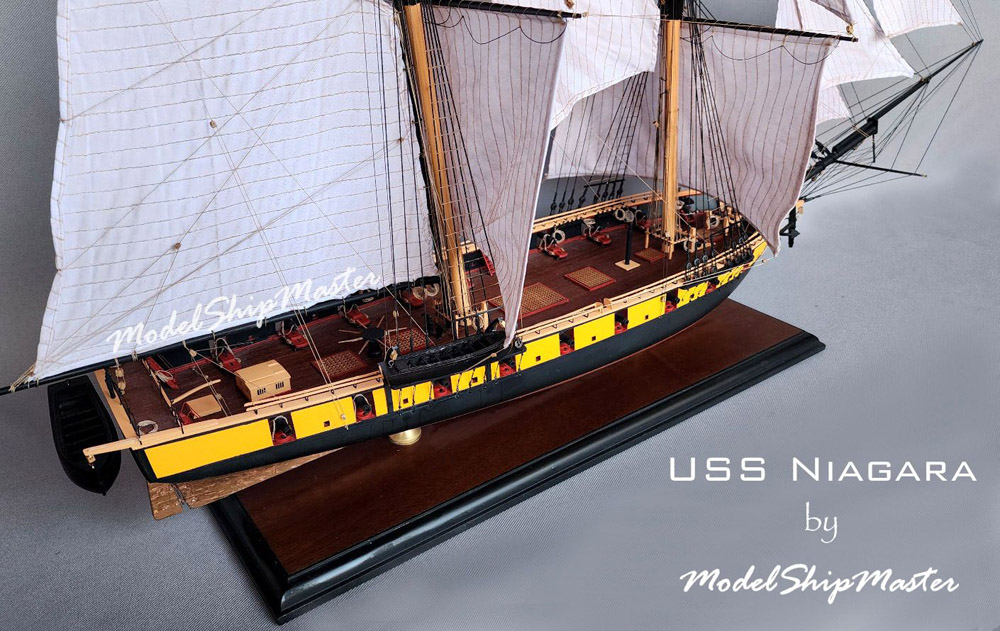|


256-bit encryption
$500,000 protection

|
USS
NIAGARA MODEL

USS Niagara, commonly called the Brig Niagara, is the
ship that played a pivotal role in the battle for the
lake Erie in the War of 1812.
In
the beginning of September 1812, Daniel Dobbins, a
merchant on the Great Lakes, arrived in Washington,
D.C., to warn the United States government of the
vulnerability of the Lake Erie coastline to a British
attack.
On 15 September, Hamilton authorized Dobbins to
construct four gunboats. On 31 December, Captain Isaac
Chauncey, the commander of naval forces on Lake Ontario
authorized him to build two brigs. Oliver Hazard Perry
was named chief naval officer in February 1813.
USS
Niagara was launched on 4 July. Due to a lack of iron, the
timbers that made up the hull were joined using wooden
pins called treenails. The timbers were still green, as
the builders did not have the luxury of time to allow
the wood to dry properly.

One of the strategic advantages of building a fleet in
Erie was that the bay formed by Presque Isle was cut off
from the Lake Erie by a sandbar, which prevented British
warships from being able to enter the bay. The USS
Niagara and USS Lawrence both had a draft of 9 feet,
which was too deep to cross the sandbar. On 4 August,
USS Niagara was pulled onto the sandbar using its anchor
in a technique called kedging. A pair of 90-by-40-foot
barges, called "camels", were placed on either side of
the ship. The camels were sunk and secured to USS
Niagara. The water was pumped out of the camel, lifting
the brig. By the following day, Niagara was safely over
the sandbar. Lawrence was floated over the sandbar a
couple of days before Niagara.
On 10
September, both fleets got underway. Perry formed his
fleet (10 ships) into a line, with the larger ships each
being assigned a target: Lawrence to Detroit, USS
Niagara to Queen Charlotte, and Caledonia to Hunter. As
the line moved to engage, USS Niagara lagged behind.
After three hours of murderous gunfire, Perry was forced
to abandon the Lawrence. Perry lowered his
battle flag, emblazoned with the last words of Captain
James Lawrence, "Don't Give Up The Ship", and in a
daring move, he was rowed a half mile to the USS
Niagara. Perry took command of USS Niagara and crossed
the British line perpendicularly. Queen Charlotte, while attempting to
prevent USS Niagara from breaking through the line,
collided with Detroit and became entangled. USS Niagara
opened fire with both broadsides: the starboard
broadside hitting Queen Charlotte and Detroit, and the
port into Lady Prevost. After several broadsides, Queen
Charlotte surrendered, followed shortly after by Detroit
and the rest of the British fleet. asasas
After the
Treaty of Ghent was signed, ending the war, the majority
of the surviving ships that participated in the Battle
of Lake Erie were disposed of. Only the USS Niagara was kept afloat.

We build this primarily
wood Niagara model the following sizes.
38" long x 26" tall x 10"
wide (shown in this page) $3,990.
Shipping
and insurance in the
contiguous USA
included. Other places:
$600 flat rate.
24" long x 19" tall x 7"
wide $2,990.
Shipping
and insurance in the
contiguous USA
included. Other places:
$400 flat rate.
Model is built per commission only. We require only a
deposit of 1/3 of the amount to start the process. The
remaining balance won't be due until the model is
completed. Click here for
lead
time.
We also accept commissions
to build your Model Shipway's Niagara model kit. Note that, as always, the wood in the kit
is softwood and has large pores. It is highly
recommended that your model be built from our hard wood. Contact us for more
details.
Learn more about the USS
Niagara here:
https://en.wikipedia.org/wiki/USS_Niagara_(1813)
 
|